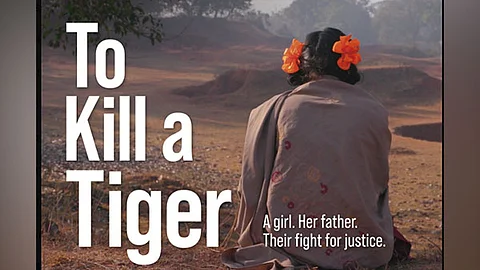

Canadian-Indian filmmaker Nisha Pahuja’s To Kill a Tiger might have missed out on an Oscar but it has certainly sparked a conversation since the documentary’s release on an OTT platform this week. The film, shot over three years, offers an intimate view of a family belonging to a tribal community in a Jharkhand village pursuing a legal case after their 13-year-old daughter (name changed to Kiran) is gangraped by three village youth.
The film focuses primarily on the child’s father and his unflinching support for his daughter’s desire to see the POCSO case through despite societal pressures. It offers a poignant insight into his sense of guilt at having ‘failed to protect her’ while never shaming or castigating his daughter as many in the village—male and female—so easily do.
Kiran questions if the violence was her fault because she had been foolish but also wonders how she would tell the man she someday fell in love with about what happened to her. That the child is able to dream of love and marriage even as her community pressures her parents to marry her to one of her rapists is a testament to what a loving and supporting family can offer. While the lack of support can leave scars on the soul of a survivor, Kiran’s family shows how love can heal and empower.
As moving as the film may be, it is also troubling on legal and ethical grounds. The film was shot when Kiran was a minor. The filmmaker says when she turned 18, Kiran decided her face could be shown. The POCSO act says a survivor’s identity cannot be revealed without a special court’s order and only if it is in the child’s interest. The law does not speak of Kiran’s specific circumstance but within the dynamics of the crew’s long-term engagement with the family alongside the NGO supporting them, the mechanisms of consent become complicated.
Further, as much as the crew’s presence may have protected the family, it clearly contributes to the community’s wrath. The film also ends noting the accused had appealed the trial court’s conviction, raising concerns if sections of the documentary could hurt the prosecution’s case in a higher court. Most concerning is a scene in which the child reads out her statement (to be made in court) explaining the rape in graphic detail—a scene that reads as voyeuristic and unnecessarily sensational.
Well-intentioned as the filmmaker may be, cognisance of the law and power dynamics at play might have better mitigated potential harms and made for a more sensitive film.